 by our College Data Analytics Team
by our College Data Analytics TeamWidener total enrollment is approximately 6,150 students. 2,633 are undergraduates and 1,754 are graduate students.
Male/Female Breakdown of Undergraduates
The full-time Widener undergraduate population is made up of 55% women, and 45% men.
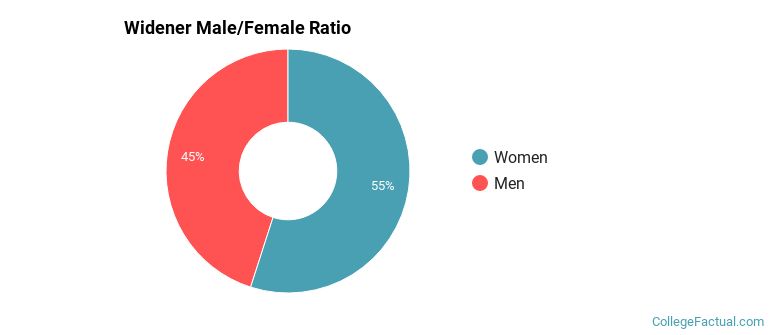
For the gender breakdown for all students, go here.
Widener Racial/Ethnic Breakdown of Undergraduates

| Race/Ethnicity | Number |
|---|---|
| White | 1,906 |
| Black or African American | 309 |
| Hispanic | 164 |
| Asian | 90 |
| Multi-Ethnic | 71 |
| Unknown | 53 |
| International | 37 |
| Native Hawaiian or Pacific Islander | 1 |
See racial/ethnic breakdown for all students.
Male/Female Breakdown of Graduate Students
About 63% of full-time grad students are women, and 37% men.
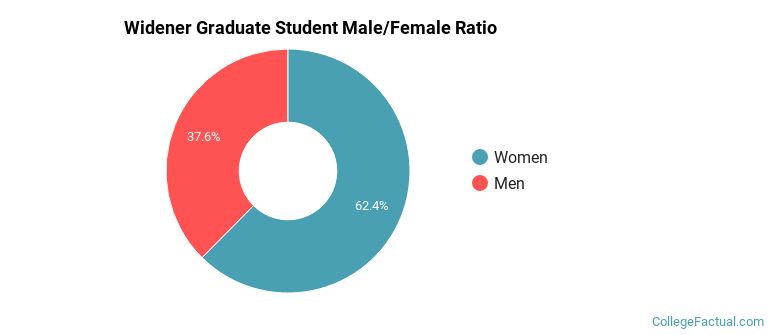
For the gender breakdown for all students, go here.
Widener Racial-Ethnic Breakdown of Graduate Students
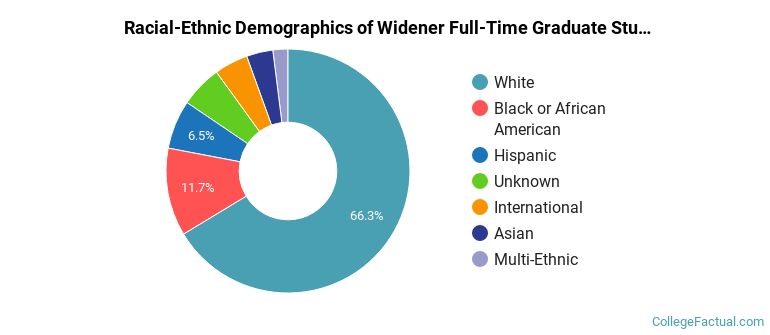
| Race/Ethnicity | Number |
|---|---|
| White | 1,113 |
| Black or African American | 207 |
| Unknown | 125 |
| Hispanic | 112 |
| International | 75 |
| Asian | 69 |
| Multi-Ethnic | 48 |
| Native Hawaiian or Pacific Islander | 0 |
See racial/ethnic breakdown for all students.
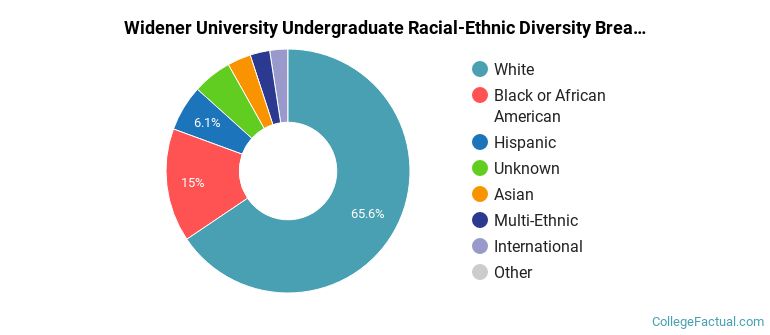
| Race/Ethnicity | Number |
|---|---|
| White | 3,955 |
| Black or African American | 903 |
| Unknown | 407 |
| Hispanic | 374 |
| Asian | 208 |
| Multi-Ethnic | 156 |
| International | 132 |
| Native Hawaiian or Pacific Islander | 1 |
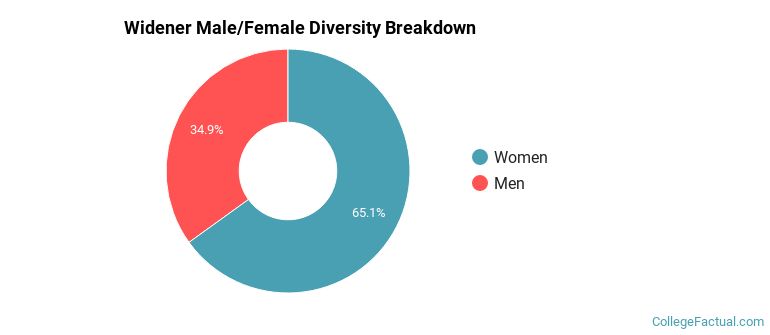
There are approximately 3,997 female students and 2,153 male students at Widener.
Widener ranks 1,014 out of 2,183 when it comes to geographic diversity.
42.28% of Widener students come from out of state, and 0% come from out of the country.
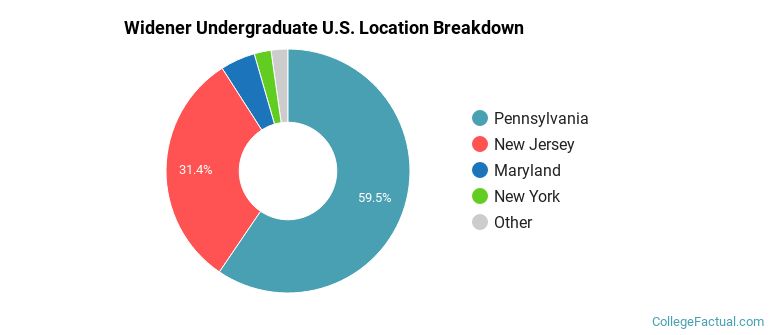
The undergraduate student body is split among 14 states (may include Washington D.C.). Click on the map for more detail.
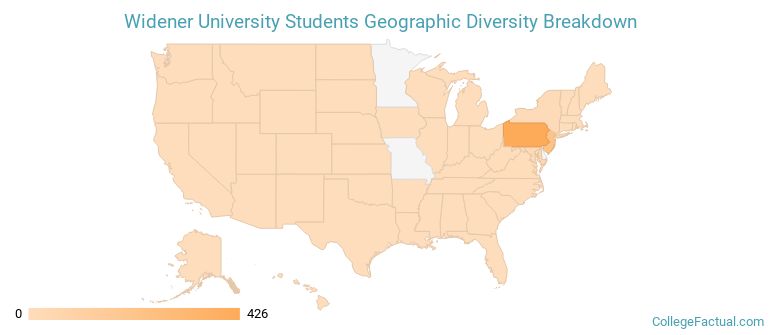
| State | Amount |
|---|---|
| Pennsylvania | 426 |
| New Jersey | 225 |
| Maryland | 33 |
| New York | 16 |
| Connecticut | 4 |
Students from 39 countries are represented at this school, with the majority of the international students coming from Saudi Arabia, China, and Vietnam.
Learn more about international students at Widener.
A traditional college student is defined as being between the ages of 18-21. At Widener, 39.69% of students fall into that category, compared to the national average of 60%.
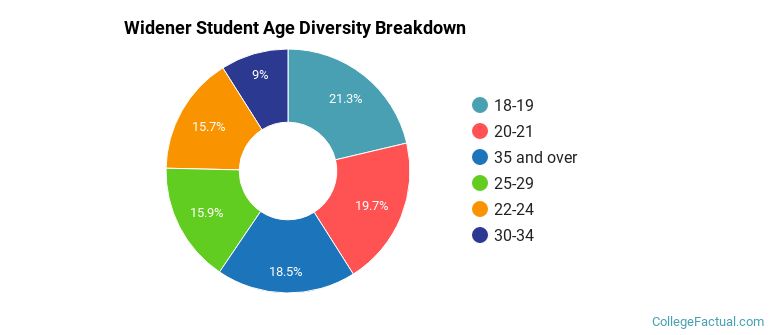
| Student Age Group | Amount |
|---|---|
| 18-19 | 1,345 |
| 20-21 | 1,242 |
| 35 and over | 1,165 |
| 25-29 | 1,002 |
| 22-24 | 988 |
| 30-34 | 566 |
| Under 18 | 0 |
Footnotes
*The racial-ethnic minorities count is calculated by taking the total number of students and subtracting white students, international students, and students whose race/ethnicity was unknown. This number is then divided by the total number of students at the school to obtain the racial-ethnic minorities percentage.
References
Department of Homeland Security Citizenship and Immigration Services
Image Credit: By User:Smallbones at English Wikipedia. under License